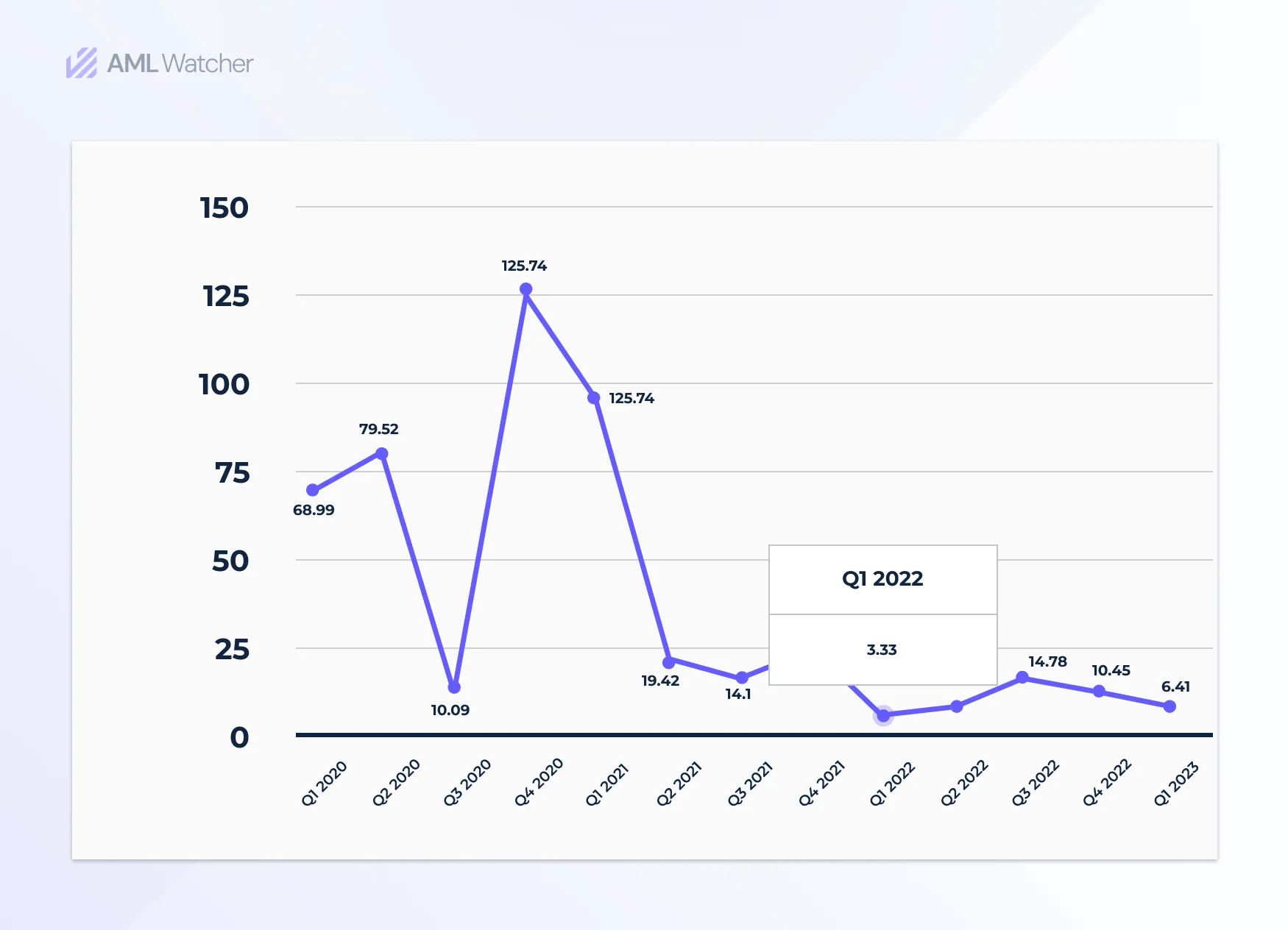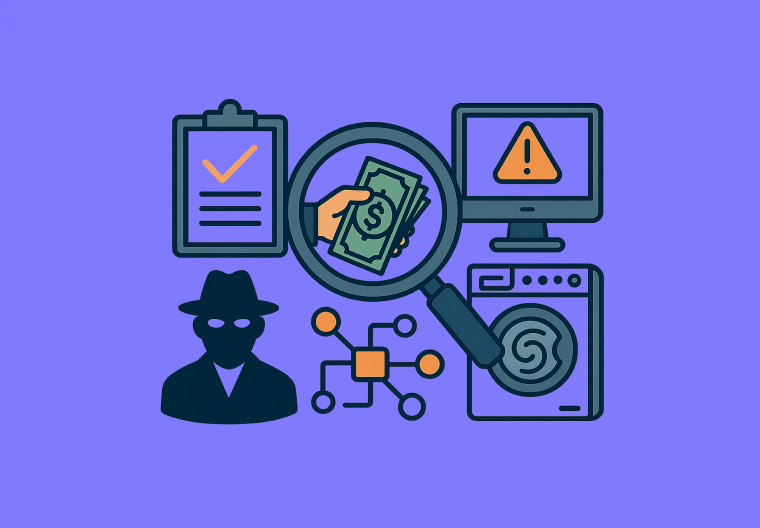
Biometric AML: A Vital Ally for Financial Crime Compliance and Enforcement
The Advent of Biometric AML Revolutionized Way of Identity Verification
In times of rising fraud cases, the urgency of smart identity verification is un-negotiable. With rapid tech advancement making their way into Anti-Money Laundering and Counter Financing of Terrorism (CFT), biometric technology lifts off the burden by introducing an efficient way of providing a higher level of security and accuracy.
From banks to insurance firms, from fintech to gaming industry, competitive leaders have already deployed the technology to pave their way onto growing path towards success. As we proceed ahead, it’s high time to explore the challenges that come associated with biometric AML in the niche of AML.
Build a Safer Future with Biometric AML
Money laundering is a very complex and major problem to exist in modern times. This is often made prevalent by the use of the anonymity principle across financial institutions. Criminals may then find it easier to conceal their identity and illgeal money under the disguise of this anonymity. Under current time, we’re experiencing a surge in many cyber attacks and data breachers, making it difficult to maintain transparency.
To combat this, it’s time to move away from the traditional verification methods and embrace biometric authentication features like AML Watcher Facial recognition.
Real World Example of Weak Authentication in AML Compliance
Equifax, one of the biggest credit reporting companies in 2017, in the United States, data breach serves as a noteworthy real-world example of the serious consequences of weak authentication in AML compliance. Forbes reported, Equifax had a significant data breach that exposed the personal data of around 147 million Americans. Due to an error in Equifax’s website software, hackers were able to obtain confidential customer information through this breach. Names, Social Security numbers, birthdates, residences, and in some cases, even driver’s license information were exposed in the incident. This breach of data left some serious consequences like identity theft, fake transactions, and regulatory fallout.
Which Industries Benefit the Most from the Use of Biometrics?
Financial Sector
The financial sector leads the way in adopting biometric technology to meet stringent regulations. Banks are embracing the accuracy and convenience of biometrics, incorporating facial recognition, voice recognition, and fingerprint scanning. From everyday transactions to ATM withdrawals, biometric verification ensures airtight security in the financial world.
Healthcare
In healthcare, biometric authentication plays a critical role in securing sensitive information. It allows patients and medical staff to protect the exchange of internal data by using biometric features like facial recognition. Hospitals can verify the identity of all personnel, from entry-level staff to top-tier professionals, defeating illegal prescription drug use.
Airbase & Sports Sector
The need for biometric AML across airports & sports sectors helps greatly in verifying the identity of travelers and attendees, enhancing security. Airports and customs departments mainly struggle with identifying hidden networks of fraud. Implementing biometric AML in such terminals helps detect fraud in seconds.
For Instance: Major Airlines and sports sectors across the US are now relying on facial biometrics for strong security protocols.
The average number of breached data sets for the year 2020 2023 in millions
As per the stats concerning the advent of 2023, six million data records were exposed. However, dating back to 2020, nearly 125 million data sets were marked as risky, highlighting the increasing demand for biometric AML.
Despite the ongoing complexity of cyber-attacks, there exists a hope to manage a growing amount of risks with developing technology in the field of AML, depicting further advancements in biometric AML.
The same technological advancements brought us to the advent of biometric AML, and it is likely to get better surpassing security threats in intelligence.
Understanding the benefits of Facial Biometrics in AML
The screening process greatly benefits from biometric authentication, which uses distinctive algorithms to identify precise aspects including facial features, facial shape variation, and overall recognition for precise matching. Coverage of other benefits includes:
Enhanced security – is a powerful tool to shield against unauthorized access and to combat fraudulent activities. This means your money and investment stay safer rather than being involved in illicit activities.
Reducing fraud cases- has become easier than ever with biometrics, as it discards any attempt of the subject to pretend to be someone they’re not.
Improved customer experience – is a must for advancement and leaving seamless user experience impact on the customers
Compliance with rules – is a must for financial institutions to keep AML controls intact. Biometrics helps them meet these rules by making sure people are who they say they are.
Balancing Biometrics: Privacy and Ethics in Financial Security
Using biometric authentication in financial security comes with crucial privacy and ethical considerations. Let’s delve into these concerns:
Privacy Concerns
Biometric data, like fingerprints and facial features, is super personal. Collecting and storing this data can make people worry about their privacy. To address these worries, financial institutions need to:
- Use strong encryption to protect the data.
- Store it securely so that no one unauthorized can access it.
- Be very strict about who can see or use this data.
- Tell customers exactly how their biometric data will be used and get their permission before using it.
Ethical Considerations
Ethical issues in biometric authentication revolve around things like getting permission, who owns the data, and making sure the system doesn’t treat people unfairly.
- Getting permission from people before using their biometric data is a big deal.
- Figuring out who owns this data e.g, is it the person it belongs to or the institution?
- Making sure the system doesn’t show unfairness, like treating some groups of people worse than others. This happens if the system has biases. Institutions need to keep checking for these biases and fix them to be fair to everyone.
One of the most effective techniques to prevent identity theft is biometric authentication. Fake attacks may be readily avoided with facial biometric authentication supported by artificial intelligence. In order to validate, identify and confirm the live presence of the customer, AML Watcher advanced biometric verification checks use hundreds of AI models. Our solutions ensure your business is protected from face spoof attacks with zero false positives.
We are here to consult you
Switch to AML Watcher today and reduce your current AML cost by 50% - no questions asked.
- Find right product and pricing for your business
- Get your current solution provider audit & minimise your changeover risk
- Gain expert insights with quick response time to your queries



